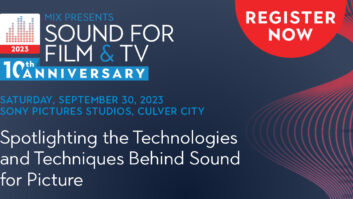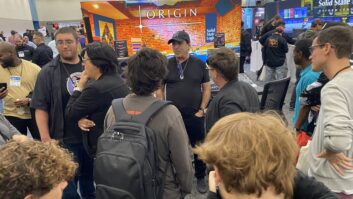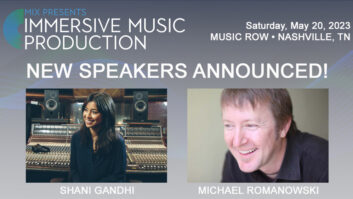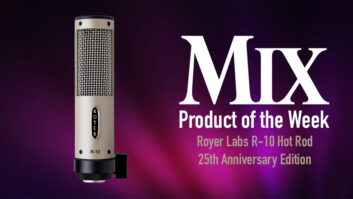Twenty-five years ago, singer/voice-over artist Penny Riker and musician/engineer David Schwartz looked out over the San Francisco Bay Area and saw that an industry of pro 16/24-track and garage 4/8-track studios was burgeoning — but detailed data about recording facilities was nonexistent. So they came up with the idea of a directory of Bay Area recording studios, and with some help from local music magazine BAM, Mix magazine (originally called The Mix) was born in 1977.
The first issue of The Mix filled 72 pages and included profiles on 112 Northern California studios and a few articles on recording techniques. The concept caught on, and the second issue presented Southern California facilities, followed by more California editions, then a new-products directory issue for the 1978 AES in New York City, featuring hot new releases such as the Ursa Major Space Station and Stephen St.Croix’s Marshall Time Modulator. As The Mix grew, its directories expanded to include studios throughout the U.S., as well as listings of essential audio services, such as mastering/pressing/duplication, sound reinforcement, studio design, video/film post and remote recording.
By 1980, The Mix had evolved from a large newsprint directory to standard magazine size, and the name was changed simply to Mix. The monthly directories were retained, categorized by region or by industry segment, as Mix put increasing emphasis on its role as the trade magazine serving audio production pros everywhere. Eventually, the monthly directories were dropped, in favor of the annual Mix Master Directory, presenting all of the facility information in a single volume.
The audio industry has changed greatly since 1977. A studio phrase like “feed the 48k Acid loop through the Lightpipe port, downsample it to 44.1 and route the SRC’s AES out to the DAW” would make little sense in those days when analog ruled. These days, it’s hard to even imagine a world sans Federal Express, much less without PCs, Macs, e-mail, Websites, cell phones, DVDs, DAWs, MIDI or MADI. Yet pro audio is unique among technology-driven industries, in that despite the impressive performance of today’s PCs, we still pay homage to ½-inch analog 2-tracks, vintage mics and tube signal processing.
Audio technologies — and Mix — have changed over the years, and we share the industry-wide dedication to serving the pro community and improving our product. Thanks to the hard work and creative inspiration of our art staff — Kay Marshall, Dmitry Panich, Liz Heavern, Mae Larobis — you are holding a redesigned Mix, with an updated look for the many columns, features and departments. Our goal was to present cleaner, more readable layouts, while offering a quick means to finding the section you want. We hope you find that it works.
Of course, our editorial mission — providing Mix readers with reliable, useful and up-to-date information on the industry — is our prime directive. We appreciate your support over the past 25 years and look forward to even better days ahead.







